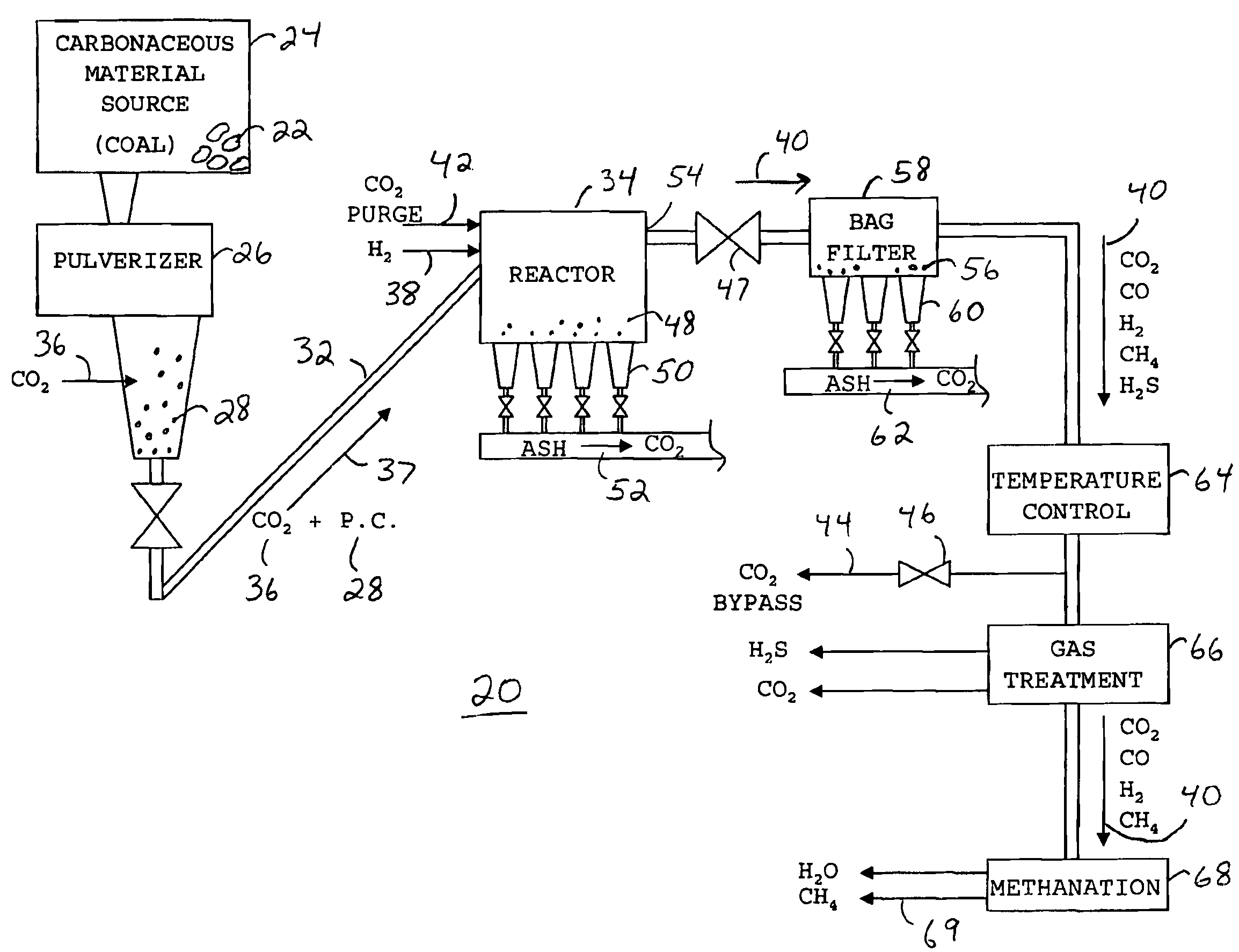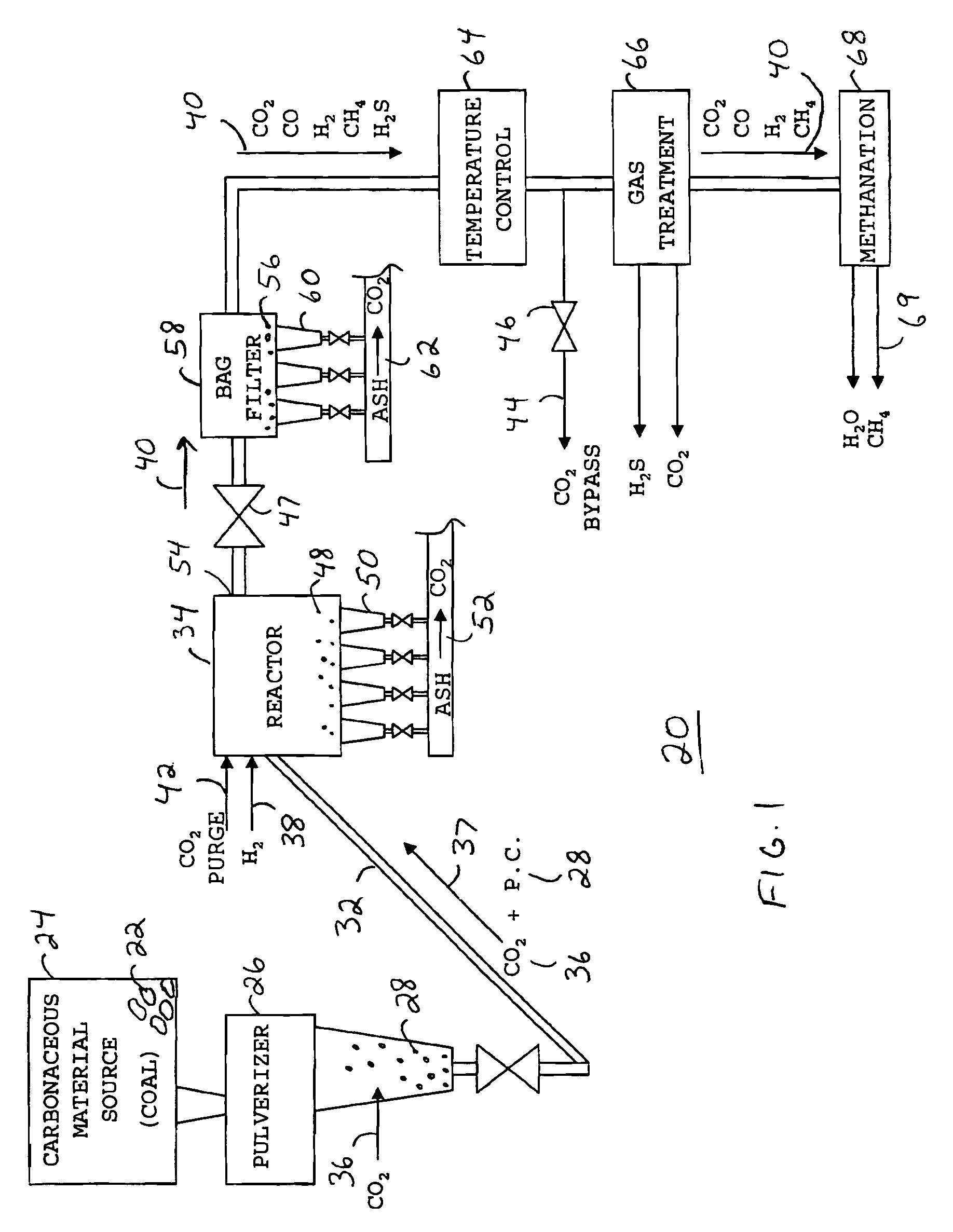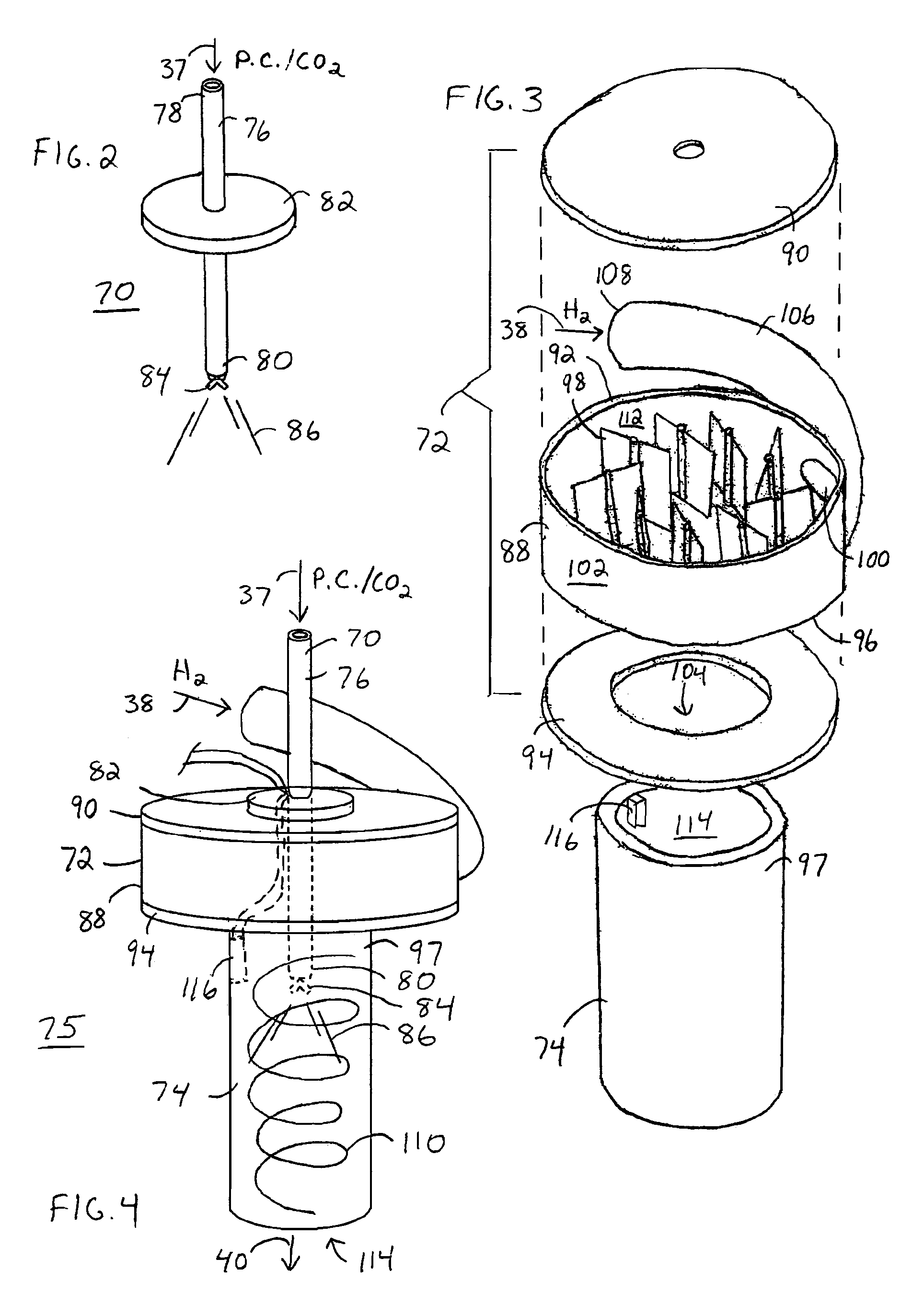Method and apparatus for producing methane from carbonaceous material
a carbonaceous material and methane technology, applied in the field of energy production, can solve the problems of difficult and expensive storage of hydrogen in its free form (i.e., liquid hydrogen and compressed hydrogen), affecting the development and use of hydrogen fuels, and achieving high temperature or high pressure, efficient production of methane, and effective delivery and mixing
- Summary
- Abstract
- Description
- Claims
- Application Information
AI Technical Summary
Benefits of technology
Problems solved by technology
Method used
Image
Examples
Embodiment Construction
[0027]The present invention provides a system and apparatus for reacting a carbonaceous material with hydrogen to produce a methane-rich exit gas. The invention is discussed below with reference to the use of coal. However, it should be understood that other carbon containing materials may alternatively be utilized, such as biomass, tar sands, bitumen, oils, biogas, wastewater solids, algae, agricultural products, and wastes.
[0028]FIG. 1 shows a block diagram of a hydrogasification system 20 in accordance with a preferred embodiment of the present invention. Hydrogasification system 20 reacts carbonaceous material with hydrogen in the absence of liquid water, steam, or oil by utilizing an inert carrier fluid to convey a particulate form of the carbonaceous material.
[0029]Hydrogasification system 20 receives a carbonaceous material, in this exemplary scenario coal 22, from a source 24. Carbonaceous material source 24 may be a conventional coal bunker from which coal 22 is fed through...
PUM
| Property | Measurement | Unit |
|---|---|---|
| pressure | aaaaa | aaaaa |
| heat resistance | aaaaa | aaaaa |
| particulate size | aaaaa | aaaaa |
Abstract
Description
Claims
Application Information
 Login to View More
Login to View More - R&D
- Intellectual Property
- Life Sciences
- Materials
- Tech Scout
- Unparalleled Data Quality
- Higher Quality Content
- 60% Fewer Hallucinations
Browse by: Latest US Patents, China's latest patents, Technical Efficacy Thesaurus, Application Domain, Technology Topic, Popular Technical Reports.
© 2025 PatSnap. All rights reserved.Legal|Privacy policy|Modern Slavery Act Transparency Statement|Sitemap|About US| Contact US: help@patsnap.com



